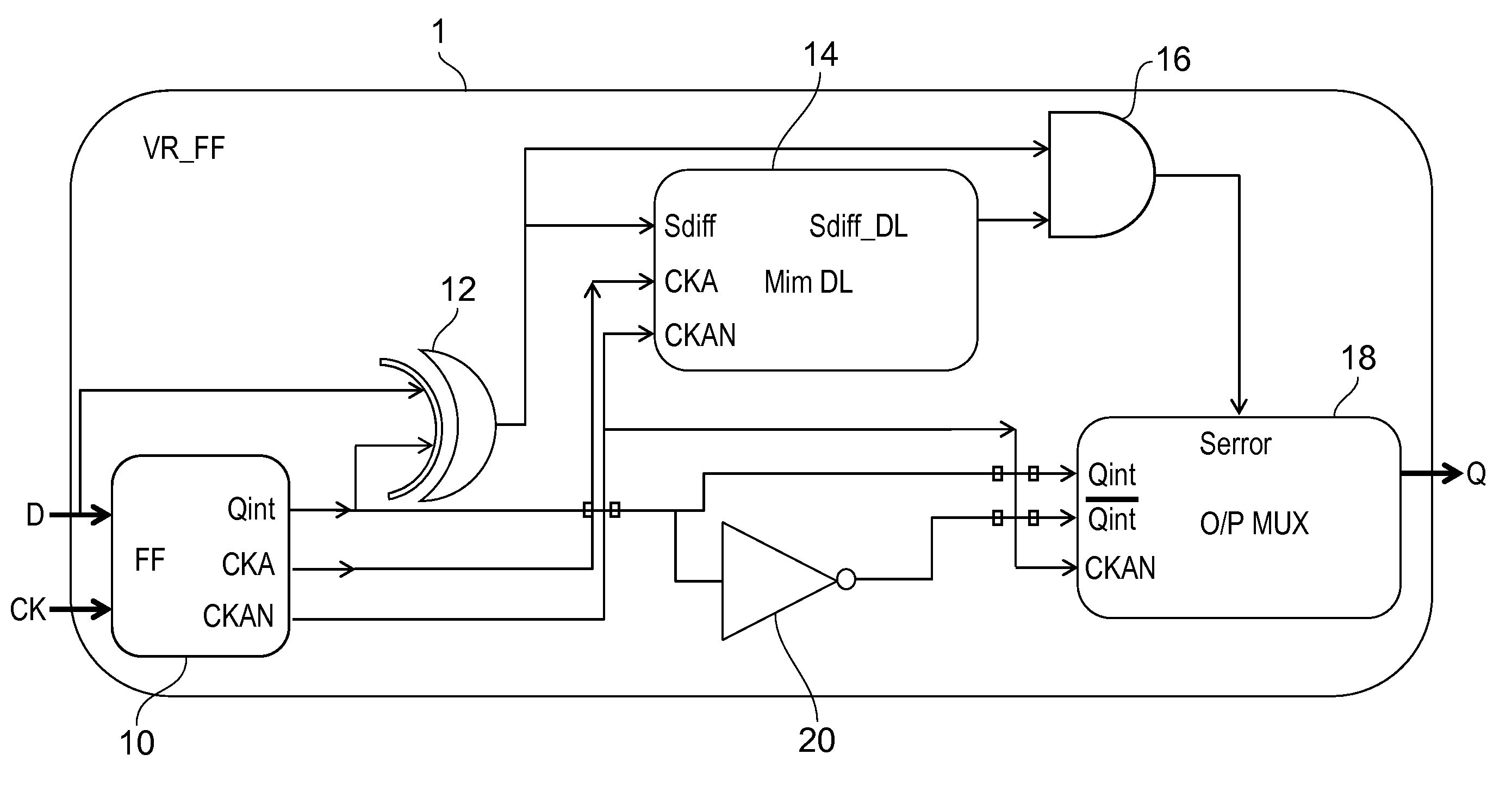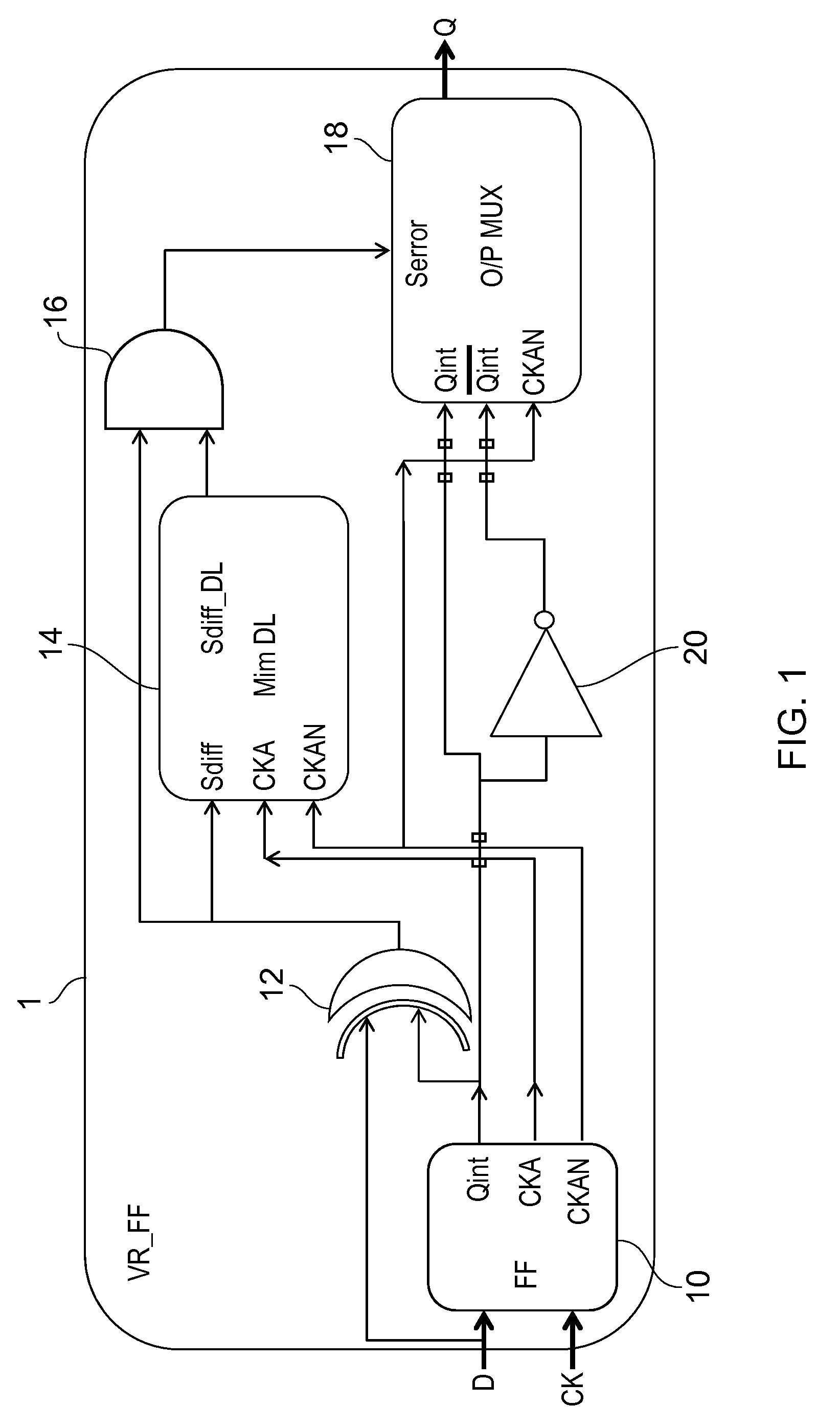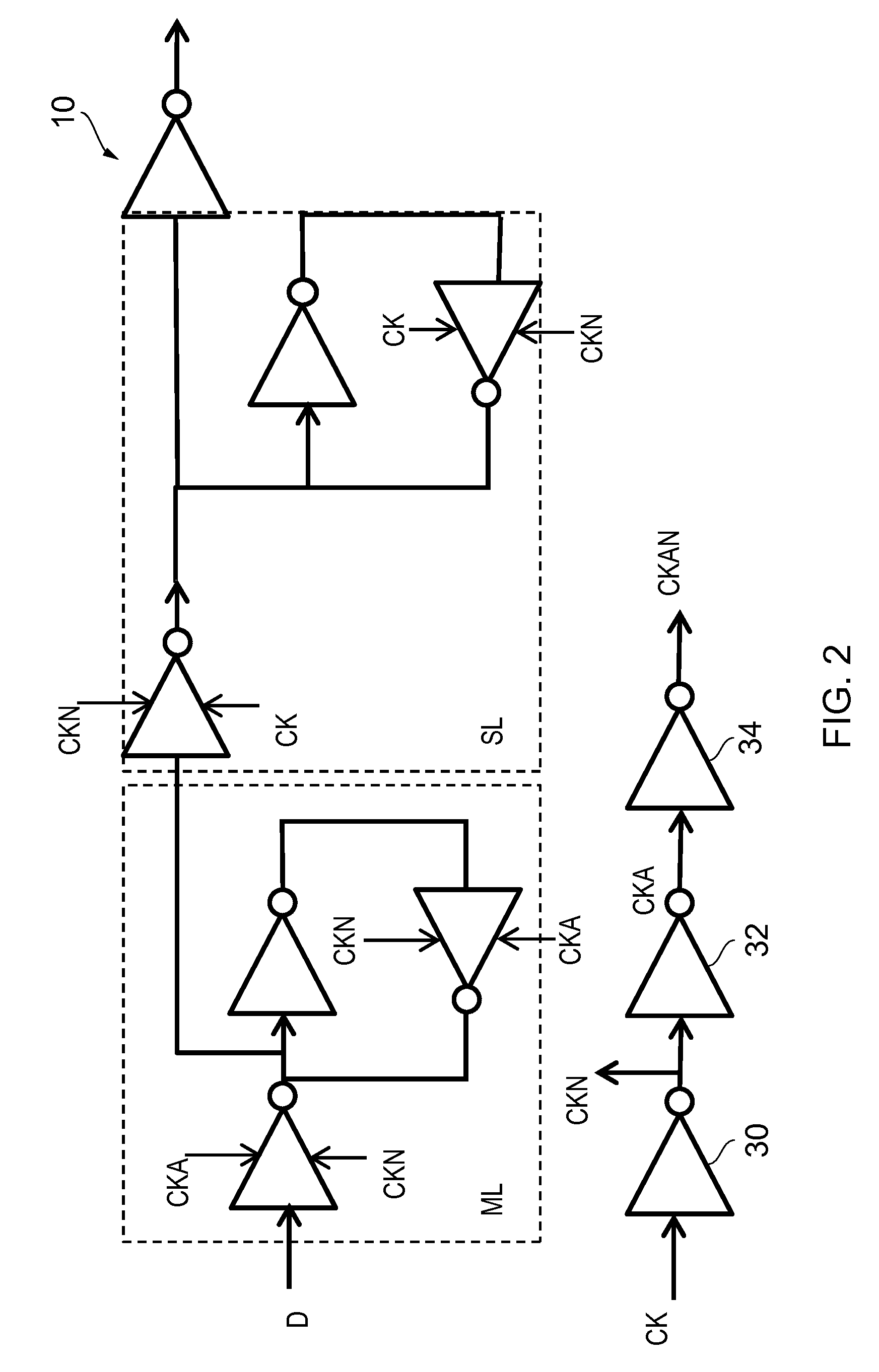Variability resistant circuit element and signal processing method
a circuit element and resistance technology, applied in the field of circuit elements, can solve the problems of sensitivity of cycle time to variations, affecting the operation of circuit elements, and affecting the operation of circuit elements, and achieve the effect of increasing overhead and excessive power consumption
- Summary
- Abstract
- Description
- Claims
- Application Information
AI Technical Summary
Benefits of technology
Problems solved by technology
Method used
Image
Examples
Embodiment Construction
[0048]The invention provides a sequential circuit arrangement and method in which a latch input signal and a latched version of the input signal are compared to derive a difference signal. This difference signal can detect when changes in the input are not propagated to the output. A second logic gate arrangement derives an error signal from the difference signal and a delayed version of the difference signal. This means that normal operation of the circuit is not detected as an error—only when the latched output fails to follow the input after the normally expected delay is the error signal created. The latch element output or an inverted version of the latch element output is selected in dependence on the error signal.
[0049]FIG. 1 shows a circuit arrangement in accordance with one example of the invention.
[0050]The circuit is a sequential circuit 1, comprising a latch element 10 clocked by a clock input signal CK. It can be a regular flip flop which samples input data on the risin...
PUM
 Login to View More
Login to View More Abstract
Description
Claims
Application Information
 Login to View More
Login to View More - R&D
- Intellectual Property
- Life Sciences
- Materials
- Tech Scout
- Unparalleled Data Quality
- Higher Quality Content
- 60% Fewer Hallucinations
Browse by: Latest US Patents, China's latest patents, Technical Efficacy Thesaurus, Application Domain, Technology Topic, Popular Technical Reports.
© 2025 PatSnap. All rights reserved.Legal|Privacy policy|Modern Slavery Act Transparency Statement|Sitemap|About US| Contact US: help@patsnap.com



